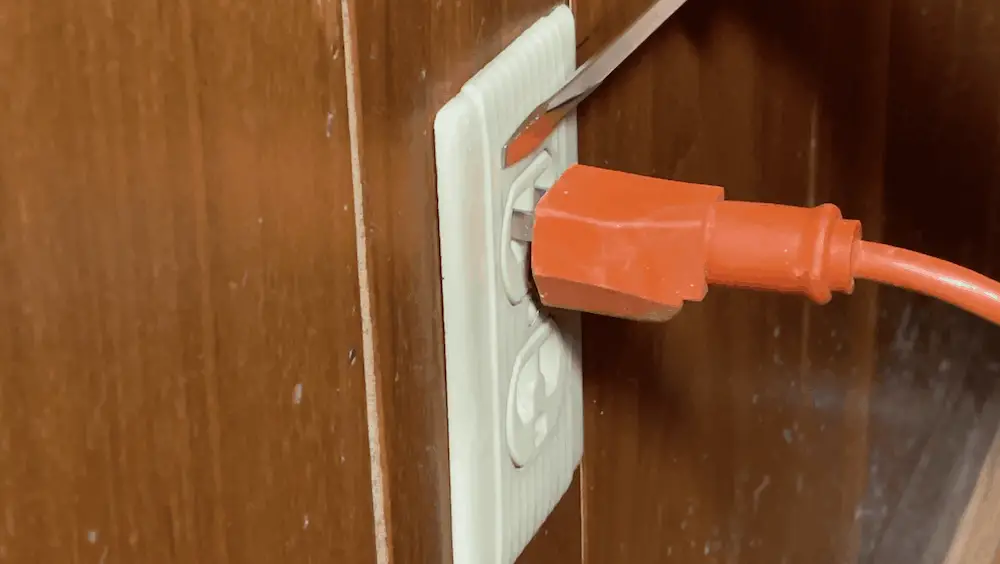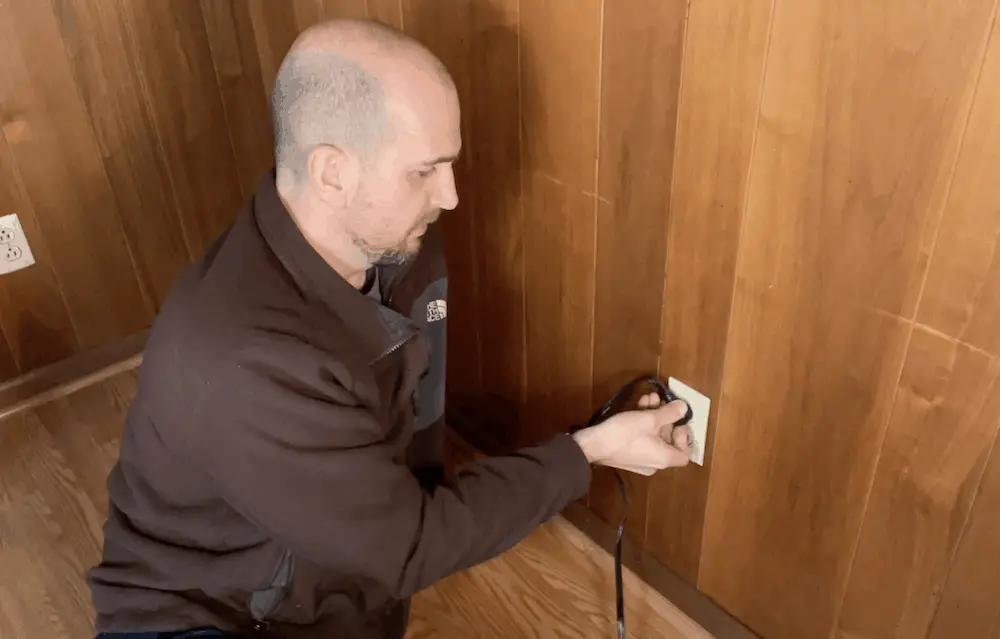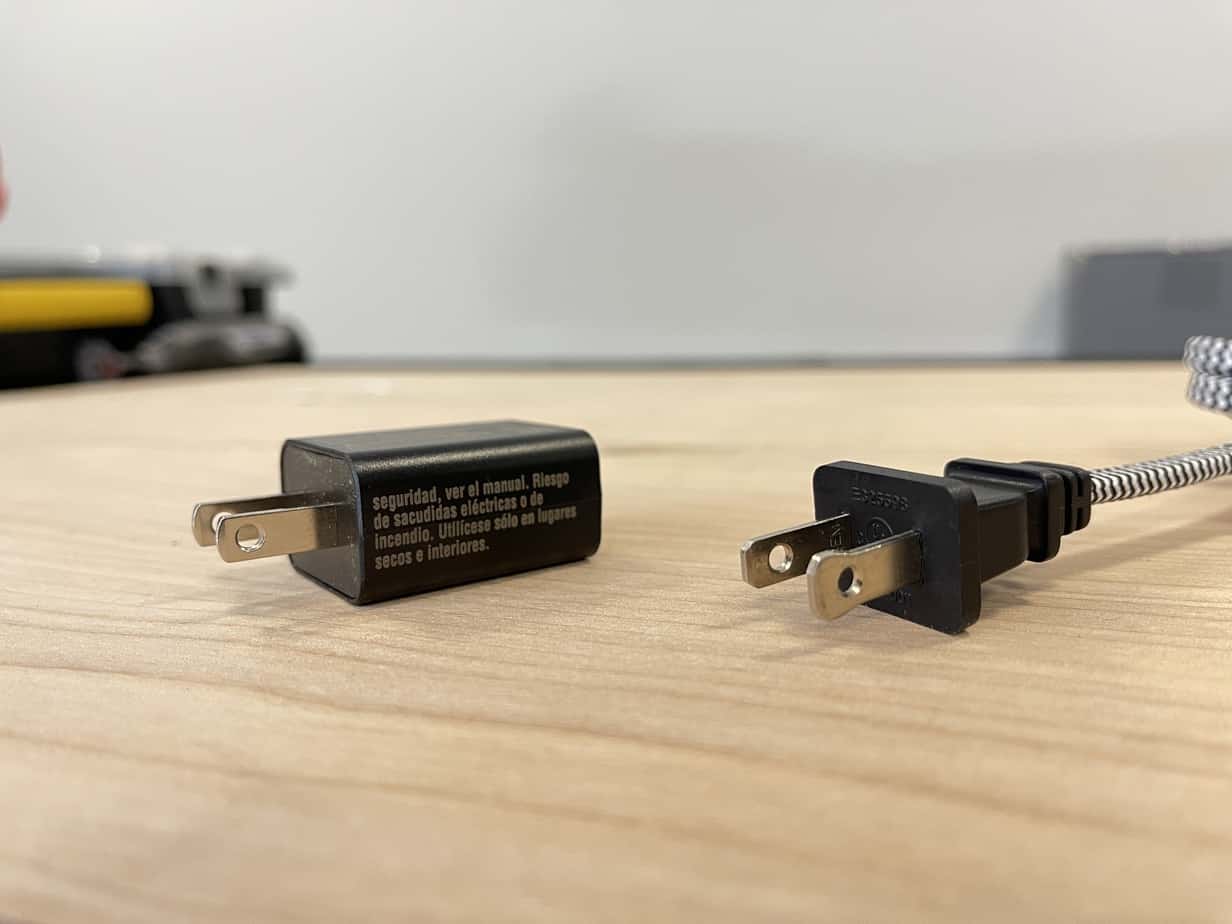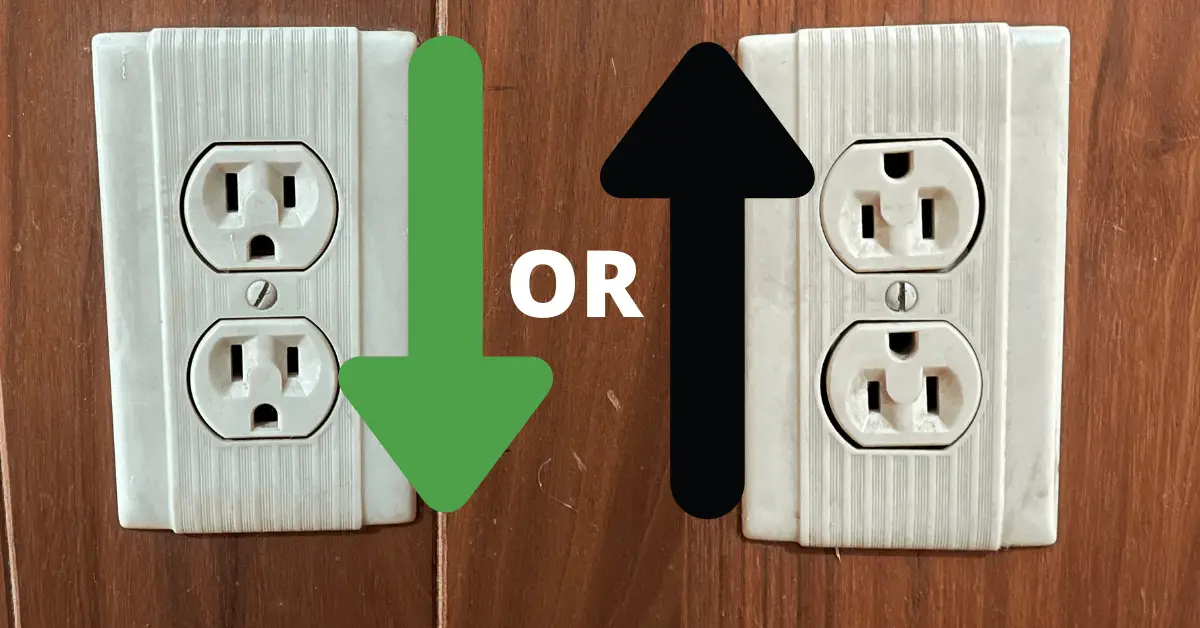If you’re looking to replace worn-out outlets in your home, you may find yourself asking: should the ground slot be facing up or down? We’ll take you through the pros and cons, so you can decide what’s best for you and your situation.
Note: The National Electrical Code (NEC) doesn’t give guidance on how to orient an outlet, as of May 2021.
What’s safer: ground facing up or down for an outlet?
In terms of safety, ground facing up has one slight advantage: a decreased risk of a short and a potential fire.
How so? If the outlet is loose and something with metal (coin, screwdriver, picture frame, or metal outlet wall plate) hits the exposed prongs, then the ground pin being at the top will help avoid any issues of a short. It will likely bounce off without consequences.

However, if the same scenario happened with the “hot” and “neutral” pins facing up, it could create a short, sparks, and a bigger problem.
There are some ways to avoid this scenario altogether, such as not hanging anything directly above an outlet and ensuring prongs aren’t exposed. But if you want to be extra prudent, then ground facing up is a more cautious orientation.
Potential drawbacks of outlets with ground facing up
While ground facing up is beneicial for the safety reason mentioned above, there are some potential drawbacks.

- Right angle cord: With a right-angle cord, also known as a quick 90, you won’t be able to take advantage of the cord’s design to lay flush against the wall when the ground is facing up because the cord has to angle up.
- Large Power Adapters: With the design of big 3-prong power adapters the design often has the best hold with the ground facing down
- Aesthetics: There’s a general consensus among the Youtube comments that the ground facing down is a more familiar orientation and a bit more comforting in a home. Whereas the ground facing up is said to look a little “off.” (One commenter mentioned it’s like the toilet paper debate – it may not make a huge difference, but it’s still bothersome. And hey, that’s valid!)
What about two-prong chargers and power cords?
Most 2-prong charging adapters are designed with non-polarized plugs where both of the plugs are exactly the same size. These 2-prong plugs are commonly found with any modern phone, laptop, or tablet charging adapters. Alternatively, you will find polarized plugs on kitchen appliances, space heaters, and printers where the larger prong is the neutral prong and the small prong is the hot prong and can only be plugged into an outlet in 1 orientation to align neutral and hot properly.

For both non-polarized and polarized 2-prong plugs, it is irrelevant which direction the ground slot is facing. There’s no benefit in either direction from a safety perspective.
The Wrap Up
It’s up to you and your preferences how you install your outlets, and there’s no definitive right or wrong answer. I prefer ground facing down, mainly because I’m used to it and I do not see a big safety benefit to the alternative. The only exception is if you are working on a construction job and the outlet ground orientation is specifically called out in the design specification.
One exception: For those who also prefer ground down, I’d suggest using ground up to signify when an outlet is connected to a wall switch. This will allow you to easily note visually which outlets are switched and which are always on. (This is common in homes built in the 50’s and 60’s where no ceiling lights were installed in the room but a lamp could be plugged into the switched outlet and the wall switch could be used to turn the lamp on/off.)




